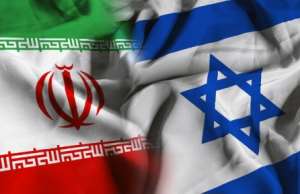
Once silent partners in oil, intelligence, and nuclear collaboration, Iran and Israel now stand on opposite sides of a scorched diplomatic divide. The 2025 war did more than deepen a decades-old enmity—it exposed a brutal symmetry of ambition, betrayal, and historical reversal. Beneath the rubble lie not just ruins, but ironies.
This piece examines the war’s outcome, framed by military metrics and the dizzying contradictions of a relationship that has spiraled from covert cooperation to overt confrontation.
Tactical Realities: A War Measured in Precision and Loss
Command Structure Collapse
Iran’s battlefield losses were staggering: 17 top generals, including its Chief of Staff and senior IRGC leaders, eliminated within days. Israel, meanwhile, sustained no high-ranking military casualties, preserving command integrity throughout the conflict.
Strike Accuracy vs. Volume Fire
Israel launched Operation Rising Lion, targeting Iran’s nuclear facilities, drone hubs, and radar networks. With U.S. satellite and intelligence support, strikes reportedly pushed Iran’s nuclear program back a decade. Iran’s retaliation—over 500 ballistic missiles and 1,000 drones—was intense but largely intercepted, with only 31 reaching Israeli soil.
Casualty Disparities
Iran faced 600+ deaths and over 4,000 injuries, encompassing scientists, civilians, and military personnel. Israel’s toll: 28 civilian deaths and 3,000+ injuries. The contrast is unambiguous.
Strategic Outcomes
Iran aimed to project power and deterrence. Instead, it lost infrastructure, commanders, and symbolic momentum. Israel sought to neutralize nuclear threats and reassert dominance. On both counts, it succeeded—with international backing and minimal operational losses.
Verdict: Tactical and Strategic Win for Israel.
A Cautionary Tale: How History Wrote the Irony
For those unfamiliar with the backstory, the irony of today’s hostilities is almost Shakespearean.
A Hidden Alliance (1950s–1979)
Iran, under the Shah, was one of Israel’s rare Muslim allies. It supplied oil during the Arab boycott and welcomed Israeli advisors in diplomacy, agriculture, and—ironically—nuclear science. Iran’s first nuclear reactor? Built under the “Atoms for Peace” initiative, with both U.S. and Israeli assistance.
Post-Revolution Break (1979)
Ayatollah Khomeini’s revolution turned the tables. Iran severed ties, denounced Israel as illegitimate, and transferred its former Israeli embassy to the Palestinian Liberation Organization. Yet, it retained the intelligence architecture that Mossad helped build.
The Iran-Contra Puzzle (1980s)
Despite ideological firewalls, geopolitical pragmatism reigned. During the Iran-Iraq War, Israel sold arms to Iran via secret U.S. channels. Tel Aviv feared Saddam more than Tehran at the time—a twisted paradox of mutual convenience.
Shadow Wars and Cyber Frontiers (2000s–2020s)
From Stuxnet to drone assassinations and proxy skirmishes, the conflict evolved in silence. Iran, through Hezbollah and other groups, responded with asymmetric tactics. Yet Israel remained a step ahead in cyber warfare and targeted strikes.
2025: The Echo of Collaboration Becomes the Roar of Conflict
The very nuclear program Israel once supported became the heart of the battlefield. And the Tehran that once welcomed Israeli cooperation now watched warheads dismantle its buried enrichment labs.
In conclusion: Firepower Settles the Score—For by operational success, Israel walked away with a clear upper hand. But in the long arc of history, victories can be preludes to future reckonings. Iran’s strategic isolation, juxtaposed with Israel’s silent Arab partners, reveals a shifting regional order.
In this war, the missiles may have fallen in minutes—but the ironies took half a century to ripen.
Retired Senior Citizen
Teshie-Nungua
[email protected]


